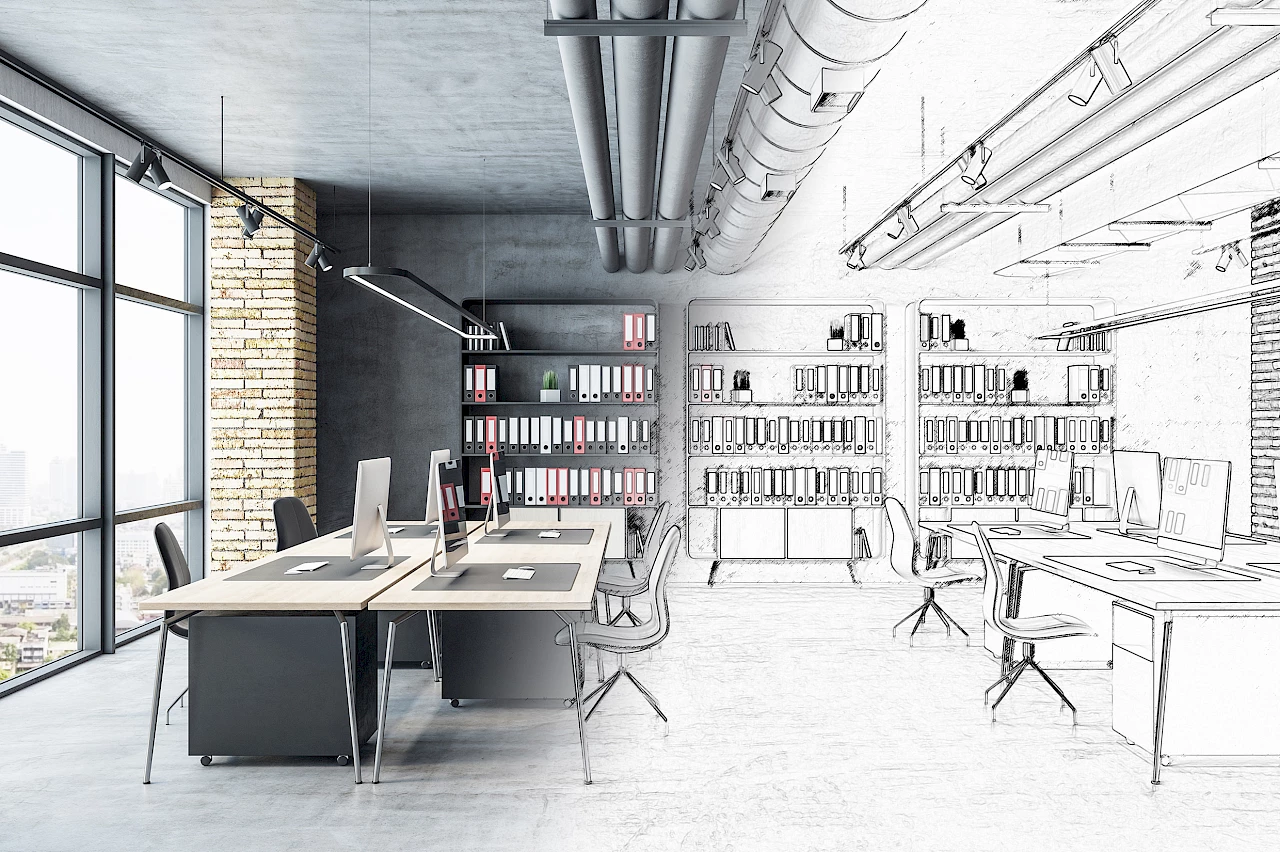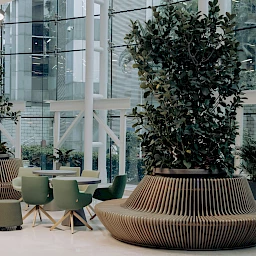DESIGNING SPACES. UNDERSTANDING BEHAVIOUR. MAKING CULTURE VISIBLE.
Working environments are no longer merely places where work is performed. They have become complex systems in which architecture, psychology and corporate culture are closely intertwined. Today, those who design spaces also shape behaviour – and thus the culture of an organisation.
Where space begins to shape behaviour
In recent years, workplaces have evolved from functional areas to vibrant environments – places where people work, learn and live. Spaces are no longer neutral backdrops but active contributors to behaviour, communication and motivation.
I work at the intersection of workplace strategy, architectural psychology, behavioural research and change management – where spaces begin to shape behaviour and corporate culture becomes visible. I am fascinated by how closely space, neuropsychology and culture are intertwined – and by how light, structure, acoustics and materials subconsciously influence our performance, concentration and wellbeing.
In a hybrid working world where teams collaborate across locations, space is being redefined. What matters is no longer just where people work, but how spaces foster the interaction between people, tasks and culture.
Spaces as levers for change
Spaces are much more than physical structures – they are catalysts for change. The key lies in enabling flexibility and individuality at the same time. This may sound simple, but in practice it is complex. Spaces must be open enough to promote dynamism and exchange, while at the same time offering structures that provide orientation and opportunities for retreat. They should connect teams while respecting individual needs – from tranquillity to inspiration, from community to identity.
Achieving this balance is demanding, as it requires a deep understanding of psychological, organisational and architectural interrelations. It calls for expertise that goes far beyond conventional space planning. Those who design spaces shape behaviour – and thereby influence how people collaborate, lead and develop.
Spaces that enable both flexibility and individuality create belonging, trust and energy. They allow people to experience a sense of agency and to actively contribute to change. In this sense, change management is not merely accompanied – it becomes tangible within the space itself.
Behavioural research meets workplace design
Architectural psychology shows how profoundly our thoughts and emotions are influenced by spatial conditions. Light, proportion, colour, material and acoustics constantly send signals to our brains. These affect concentration, mood and motivation – often unconsciously, yet always effectively.
Workplace design that understands these mechanisms can purposefully influence behaviour. Spaces can foster concentration, facilitate communication or spark innovation – depending on how they are designed and used.
In my work, I combine psychological insight with organisational knowledge: Which types of spaces foster teamwork, and which support retreat? How much structure does flexibility need? How can leadership be supported through space without exercising control? Architecture thus becomes a mirror of organisational dynamics and a tool to influence them positively.
Making culture visible
Organisations often talk about values such as openness, trust and agility. Yet whether these values are truly lived usually only becomes apparent in their physical spaces. Architecture is therefore not only an expression of corporate culture but also a touchstone for it.
Those who want to foster participation need places for exchange. Those who wish to strengthen personal responsibility need spaces that enable autonomy. And those who aim to promote focus must create environments that genuinely allow for deep work.
Spaces that reflect corporate culture give people orientation and meaning. They are tangible expressions of an organisation’s mindset – and make visible how it approaches people, change and responsibility.
From insight to implementation
A successful design process begins with understanding. What behavioural patterns characterise everyday work? Which spaces are used, and how? Where are the psychological barriers that hinder change?
This is followed by a concept that designs experiences rather than just spaces. Light, acoustics, circulation, materials and zoning are combined to encourage desired behaviours. Finally, change is anchored through participation: communication, feedback and involvement turn design into a genuine cultural process. The result is working environments that are not only aesthetically appealing but also strengthen connection, wellbeing and performance.
Space as a leadership tool
The workplaces of the future are adaptive systems – dynamic, networked and culturally shaped. Architectural psychology helps us design these systems consciously. I therefore see work environments not as architectural projects but as cultural transformation processes. To me, spatial design is a leadership tool – and at the same time an expression of attitude: how organisations deal with people, change and responsibility.
Sandra Gauer studied business psychology in Vienna and London. For almost 20 years, she has devoted herself exclusively to new working environments. With her interdisciplinary background, she combines architectural psychology, change management and organisational development into a holistic consulting approach. The model of architectural psychology she has developed is regarded as pioneering for the design of work environments that empower people, make corporate culture tangible and secure economic futures – scientifically grounded, practice-oriented and guided by a clear vision for the working world of tomorrow. Her new book Architectural Psychology as a Success Factor will be published by Springer Verlag in December 2025. A detailed book announcement can be found on LinkedIn. More information: www.gauer-consulting.com
Cover photo: Sandra Gauer





 Sandra Gauer
Sandra Gauer 


